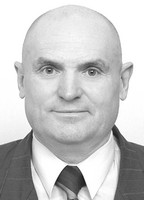Stress control practices reported by university students engaged in physical education
Фотографии:
ˑ:
Teoriya i praktika fizicheskoy kultury №6 2017, pp.86-88
Dr.Hab., Professor V.G. Shilko1
Dr.Med. T.A. Shilko1
PhD, Associate Professor Е.S. Potovskaya1
O.N. Krupitskaya1
1National Research Tomsk State University, Tomsk
The article reports data of a questionnaire survey of the NI TSU students from 20 departments and institutes of the university. The first- to third-year students were requested to rate in percentage terms their habitual stress control practices, the responses being classified by academic years, gender and physical training/ sporting activities. The survey found that the female respondents were more prone to make resort to rehabilitative sleep, reading and family support; while male respondents preferred physical practices, delicious food, entertainments, information technologies and sex. On the whole, the above stress control practices were reportedly higher preferred by the students majoring in volleyball than by their peers from the Body Conditioning (GPC) division. It should be noted with conservative optimism that alcohol and smoking were among the least reported anti-stressors, whilst narcotics and other psychotropic agents were not mentioned at all.
Keywords: stress mitigation, questionnaire survey, physical education.
References
- Miteva I.Y. Kurs upravleniya stressom [Stress management course]. Moscow: MarT publ., 2004, p. 288.
- Selye G. Stress bez distressa [Stress without distress]. Moscow: Progress publ., 1979, 124 p.
- Scherbatykh Y.V. Psikhologiya stressa i metody korrektsii [Psychology of stress and correction methods]. St. Petersburg: Piter publ., 2006, pp. 256.
- Shil'ko V.G., Shil'ko T.A., Potovskaya E.S., Krupitskaya O.N. Zavisimost pokazateley stressoustoychivosti studentov ot ikh otnosheniya k fizkulturno-sportivnoy deyatelnosti [University students' stress tolerance rates versus their attitudes to physical training and sports]. Teoriya i praktika fiz. kultury, 2016, no. 12, pp. 41-43.



 Журнал "THEORY AND PRACTICE
Журнал "THEORY AND PRACTICE